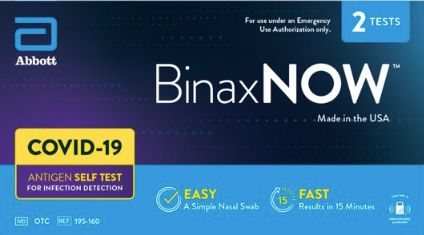A little more than two years after COVID-19 first entered our lives, most Americans are eager to get back to normal ― or at least “normal-ish.”
As of today, 77.2% of Americans have received at least one dose of a COVID-19 vaccine and 66.1% are fully vaccinated, according to the Bloomberg News global vaccine tracker. Children as young as 5 are now eligible for vaccines, and most have returned to in-person schooling. (Kids under 5 may have authorized vaccines as soon as next week.) In May, employment rose by 390,000 jobs and the unemployment rate remained steady at 3.6%, according to the Bureau of Labor Statistics.
Still, to declare “COVID is over,” as many Americans are eager to do, wouldn’t be accurate: Cases of COVID-19 are on the rise yet again ― though thanks to vaccines, the prevalence of testing and the use of antiviral drugs, there hasn’t been an uptick in hospitalizations and deaths as in previous surges.
But, most importantly, we can’t forget about the various groups of Americans who can’t get “back to normal” quite yet ― as much as they would love to do so.
For the immunocompromised, COVID remains a major threat. For those with long COVID, working through brain fog and other long-haul symptoms is an uphill battle. For the doctors and epidemiologists working with the public, COVID has to remain top of mind: It’s their job to treat those with the virus and encourage the public to keep infections down through masking and other precautions. For those who lost someone to COVID, “getting back to normal” seems impossible when “normal” always included their loved ones.
Below, we spoke to a handful of people from each of these groups about what living with the ongoing effects of COVID looks like for them right now, and how they feel about the general rush to “move beyond” COVID.
Responses have been edited lightly for clarity and length.
The People Who Lost Someone To COVID
More than 1 million people have now died of COVID in the U.S. since the pandemic’s start, according to data released by Johns Hopkins University in May. Pamela Addison lost her husband Martin to COVID in April 2020. At the time, the New Jersey couple’s children were 2 years old and 5 months old. Today, Addison is the founder of Young Widows and Widowers of COVID-19.
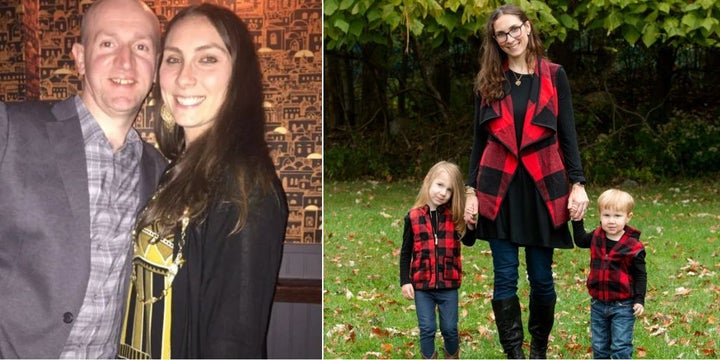
“When I lost Martin, my life turned upside down: I lost the person who was financially supporting us at the time because I was on an unpaid maternity leave. I lost my best friend, teammate, co-parent, and the person I was supposed to grow old with.
I will never move on from COVID, but I will move forward with my life. COVID is always going to be present, because it changed my life and my children’s lives forever. That is something you can’t and that I will never forget. The rush to get back to normal is frustrating.
My life will never be normal again, because Martin is no longer here. I think instead of focusing on this push to ‘normal,’ I really think we should focus on how we can help those impacted by COVID.
Over 200,000 children have lost a parent/caregiver to COVID, and they are struggling. Why not talk about how we can help and support these young children emotionally and financially? They have become the forgotten grievers of this pandemic, and it is completely frustrating and disheartening to know that people don’t care about my children’s trauma or grief ― trauma and grief that they share with so many others. We cannot keep ignoring these children and not talking about how COVID has affected their lives forever.
“My life will never be normal again, because Martin is no longer here. I think instead of focusing on this push to ‘normal,’ I really think we should focus on how we can help those impacted by COVID.”
- Pamela Addison
My daughter, although happy, also lives with a small hole in her heart. There are days she is sad because she misses her Papa and is trying to understand why he wasn’t here long enough to do things with her. She remembers her second birthday (her last with him) and talks about how he made a special cake with her, with unicorn sprinkles. She asks, ‘Why don’t I have a daddy here like my friends?’ She looks at his pictures and talks about him with her little brother, the boy who really doesn’t remember him. The boy who at times randomly will start saying, ‘My Papa died,’ with this look of sadness. They will carry their loss with them forever, and grieve throughout their lives.”
Kristin Urquiza’s father Mark died from COVID in June 2020. In the wake of his death, Urquiza cofounded Marked By COVID, a national nonprofit that “promotes accountability, recognition, justice, and a pandemic-free future.”
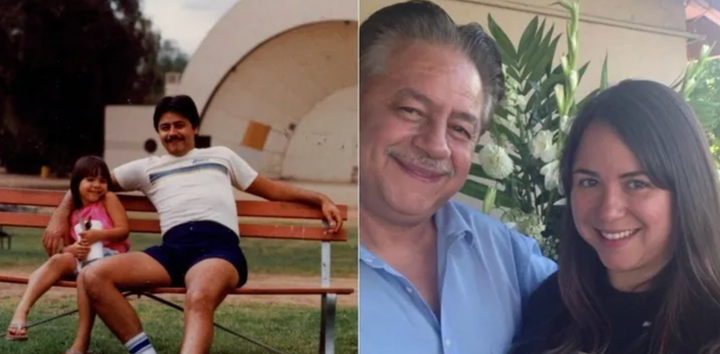
“My dad, Mark Urquiza, died from COVID on June 30, 2020. I would love to ‘move on’ from COVID, but to do so we must first recognize that COVID is not over and that ‘back to normal’ is not an option for anyone. The White House and CDC are downplaying the risks and sending us back into danger, with zero effort to mitigate infections. One in five COVID infections results in long COVID, regardless of vaccination status.
The only way to safely ‘move past’ this is to recognize past harms and current risk. A majority of people in the U.S. support masking. Recommending or requiring masking and other mitigation measures like improved ventilation would allow us to ‘get back to living’ without killing or disabling ourselves or others in the process, and data shows there is absolutely no reason – scientific, political, economic or otherwise – to ignore our current reality and gaslight the public into taking unnecessary risks with zero consent.
Ignoring the existence of a highly transmissible airborne virus and allowing it to spread unchecked is not normal.
Normal would be the ability to trust that our leaders have our best interests at heart and are providing honest information, clear science-based guidelines and support through an ongoing pandemic. Normal would be taking simple precautions like masking, eating outdoors and knowing your COVID status before gathering to keep us all safe. Normal would be recognizing 1 million U.S. lives lost to this disaster and creating appropriate space for grief, mourning and remembrance.”
The Health Care Workers
Tehseen Ladha is a pediatrician and assistant professor at the University of Alberta in Edmonton, Canada. Ladha has treated patients with COVID and argued against dropping COVID restrictions due to her concerns over pediatric hospitalizations.
“I have seen more children with COVID in the past four months than in the whole pandemic combined. I have had pediatric patients who have had serious complications from COVID, and I also have patients that have long COVID.
There is so much unknown about this virus and its long-term effects; letting it spread so quickly and widely could have devastating health effects on humanity. We should be concerned about things like long COVID, disability and morbidity. I have also seen children infected with COVID again after having had an infection six weeks prior, so the idea of herd immunity to protect our population is false.
I don’t think moving on from COVID is possible for anyone at the moment. My husband and I are both physicians and we have close family members who are elderly, immunocompromised, and a child who is still too young to be vaccinated, so ‘moving on’ is not possible for us. I think people are under the illusion that they are moving on as they return to their daily lives without masks and other important pandemic protections, but the world has changed, and there is constant evidence of that in our communities.
“I have seen more children with COVID in the past four months than in the whole pandemic combined.”
- Tehseen Ladha, pediatrician
At our children’s hospitals, there have been families waiting outside of the ER for over an hour waiting to see just the triage nurse. COVID hospitalizations continue to contribute to this health system strain. Schools and day cares also show constant evidence of the ongoing pandemic where there continue to be large absences (staff and students) due to COVID or other illnesses, especially since the lifting of masks in schools.
My pediatric patients in day care are constantly sick (no mitigation measures to prevent virus circulation) and need to be kept home in case it’s COVID, leading to many missed work days for their parents and caregivers. Even airlines have been reporting flight delays and cancellations due to staff illness. Clearly, the pandemic continues to impact every facet of society, from health to education to the economy, but our leaders (elected and otherwise) continue to send the message that it is over.”
Jason M. Kane is a pediatrician and an associate professor of pediatrics at the University of Chicago Medicine Comer Children’s Hospital. He’s an attending physician at the hospital’s pediatric intensive care unit and has worked with many young patients with COVID.
“As a pediatrician, I read with great ongoing frustration guest op-ed commentaries in prominent media outlets from physicians and other purported public health experts advocating for a ‘return to normal’ and ‘living with the virus.’
Contrary to a popular talking point, children do, in fact, die from COVID, more than any single recent influenza year on record. Even healthy children. More than 1,000 children have died from COVID in the U.S. alone.
In spite of resources available, some parents have chosen to ignore expert guidance (CDC, American Academy of Pediatrics) and have intentionally withheld vaccination from their children. Do those unvaccinated or partially vaccinated children have the tools to protect themselves? And equity matters, too. Children in areas of the U.S. with high poverty rates, a high concentration of minorities, and where access to health care is more challenging, are less likely to be vaccinated than those in more affluent areas. These are the patients I see in my hospital.
So can they return to ‘normal’? Of course I would like the pandemic to be over, but not at the expense of the health and welfare of children or other people in my communities.
“Treating a child victim of an automobile accident who wasn’t in a proper seatbelt or car seat is emotionally taxing. And COVID is no different. Kids should not die … period.”
- Jason M. Kane, pediatrician
I have faced both personal and professional attacks for wanting to keep my family and my community safe. It comes part and parcel with advocacy work. As a front-line pediatrician in the ICU, it saddens me to watch any child require medical care as a result of preventable harms.
Treating a child victim of an automobile accident who wasn’t in a proper seatbelt or car seat is emotionally taxing. Treating a child who was the unintended victim of a gunshot wound is horrific. Watching a child suffer after an accidental drowning is a pain I wish on no one. And watching children struggle to breathe from infections such as influenza or RSV taxes my spirit as a father and as a physician.
And in all of those instances, there is an opportunity for public safety and public health advocacy. And COVID is no different. Kids should not die … period. As a pediatrician, my goal is to try to ensure that all children can live to their potential, and I hope to continue to advocate for and to protect kids from COVID with whatever means we have available.”
The COVID Long-Haulers
Betsy Basom is a Spanish teacher in Los Angeles who caught COVID at the end of March 2020. She’s had long COVID symptoms ever since.
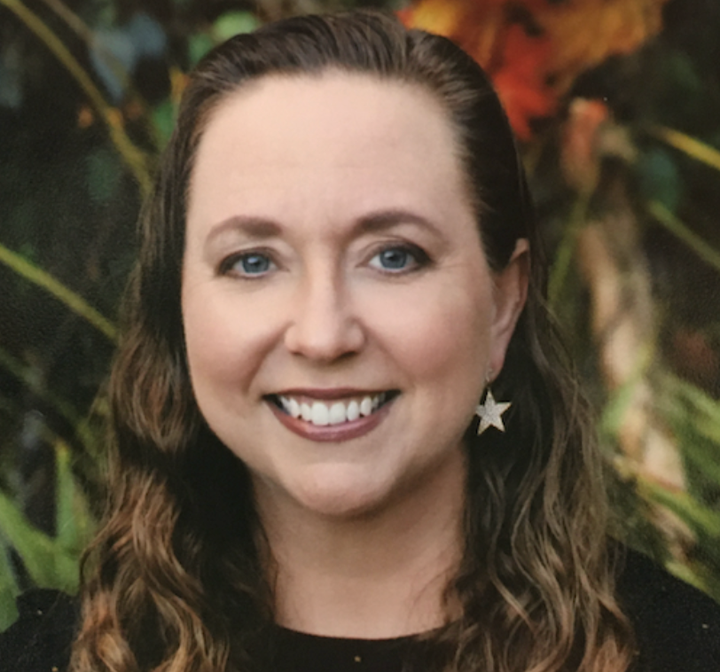
“I have long COVID, or post-acute sequelae from COVID (PASC). There are many different names for it. What it means to me is that I have not returned to my prior state of physical health. I have had so many symptoms that I would not care to list all of them (about 50 different ones at different times). The worst right now is the post exertional malaise or PEM, which causes a variety of symptoms, including shortness of breath and extreme exhaustion after relatively little exertion.
I was in great health before I got COVID. I had just been to Mammoth at the end of December 2019 and had done some of my most rigorous and best skiing ever. I skied down the backside of the mountain, starting my descent at the highest elevation on the mountain of about 11,000 feet. I can’t even imagine having the energy to do that right now. I have attempted to go for short hikes with low elevation gains, but I always have had to use my inhalers and need a complete day of rest afterward. The PEM is real, and it has changed the way I live my life.
Now, I just go home and sit or lay down. I watch a lot more TV now. I don’t have the brain power to avidly read like I used to, so watching movies and shows is easier. My life isn’t the same. My after-school activity level has dramatically decreased. My life is much more limited right now, and I’m learning how to manage it. While so many people declare their relief that the pandemic is over and have returned to their normal, busy lives, I have to say that it isn’t over for me and millions of other people.
“I was in great health before I got COVID. I skied down the backside of the mountain. ... I can’t even imagine having the energy to do that right now.”
- Betsy Basom, COVID long-hauler
What is life with long COVID like? Over the past two years, I have visited many specialists (cardiologist, pulmonologist and hematologist, to name a few) and received treatments for asthma, pneumonia, bronchitis, pleurisy and pericarditis, along with quite a few other scares along the way.
Two months into my illness, one of my blood test results showed a ‘thrombotic event likely,’ so I had to go get an urgent CT scan. No major blood clots were evident in my lungs, so that was good news. I still have to take asthma medication daily, though, and my lungs just haven’t felt the same. My bloodwork showed some abnormal results, but then when a follow-up occurs, they disappear, only to come back again. A diagnosis for a condition has been elusive.
So many people say ‘COVID is just like the cold or the flu. It’s OK if you get it now. We’re vaccinated. We are safe. You have to keep on living.’ They don’t understand the experiences of others who have had it much worse. I will do whatever I can to avoid getting COVID again, and I will do what I can to protect those around me.”
Maya David García is an artist in Chicago who has been living with long COVID for two years.
“I contracted COVID in March 2020 at my former job. I was very sick for six weeks with acute symptoms.
To date, I still haven’t fully recovered, and I now have moderate asthma, worsened heart palpitations and POTS symptoms, and worsened fatigue and chronic fatigue symptoms. I was living with disabilities and several chronic illnesses before I got COVID. Now, I am no longer able to work and am permanently disabled due to fatigue, post-exertional malaise, mobility issues, dizziness and daily, chronic pain.
In addition, I’m now also immunocompromised because I’m permanently having to take medicines to treat asthma that weaken my immune system. So for me, when I see news anchors and even public health officials talking about us being ‘post COVID,’ I want to scream because I know that community spread of COVID is still high with mask and vaccine mandates being repealed in all public spaces, including public transit.
“When I see news anchors and even public health officials talking about us being ‘post COVID,’ I want to scream.”
- Maya David García, COVID long-hauler
As a person who also doesn’t have a car, it’s infuriating that I must risk my life and safety every time I leave home, whether it’s to run an errand, pick up my prescriptions or go to a doctor’s appointment. I’ve had a Lyft driver scream at me for advocating for myself and asking her to wear a mask while I was in the car. I’ve been called all kinds of slurs — racist, ableist, misogynistic and transphobic ― because I’m advocating for disabled people as a multiracial Indigenous two-spirit nonbinary person. All because I’ve advocated for the return of indoor mask mandates, especially on public transit.
I want people to understand that the danger of COVID is still very much there, and for people like me, there is no ‘getting back to normal.’ That I’m immunocompromised because I got COVID in 2020, and my immune system issues are now lifelong. That anyone can develop long COVID or other complications from COVID. No one is fully immune, even if you’re vaccinated and boosted.”
The Epidemiologists
Saskia Popescu is an infectious disease epidemiologist and assistant professor at George Mason University. Throughout the pandemic, Popescu has worked to prepare for and mitigate the spread of the disease.
!["People don’t realize the toll [the pandemic has] taken on the infectious disease response folks," said Saskia Popescu, an infectious disease epidemiologist and infection preventionist.](https://img.huffingtonpost.com/asset/62aa4682210000ae215ed947.png?ops=scalefit_720_noupscale)
“As an infectious disease epidemiologist and infection preventionist, I have been COVID-focused since 2020. I’ve worked insane hours at my job, but have also done work in science communication on social media and volunteering for some agencies that needed COVID guidance.
I’ve also experienced the vitriol from people against scientists. It’s frankly hard and weird to spend your entire life working and training for something like this (and trying to prevent it), and then to live it and have wave after wave of preventable situations occur ― it’s hard.
People don’t realize the toll it’s taken on the infectious disease response folks. I don’t think we will move on ― the lessons are critical for us to learn, both within the infectious disease world but also among the public.
“It’s frankly hard and weird to spend your entire life working and training for something like this (and trying to prevent it), and then to live it and have wave after wave of preventable situations occur.”
- Saskia Popescu, epidemiologist
I’m ready to move past the vitriol and the Groundhog’s Day habit we have with COVID (deciding it’s over, relaxing restrictions and interventions, and then surging cases), but I think it’s so important we take the lessons from COVID and apply them moving forward: everything from investing in public health and emerging infectious disease preparedness to increased attention on those most impacted by a pandemic, encouraging people to stay home when sick or if they have a loved one at home sick, normalizing masks and washing your hands.
I think there is a middle ground where we maintain a sustainable approach to COVID that is risk-matched but requires some ongoing attention and investment, and I’m worried people no longer see it that way.
We don’t have to live in a pandemic state forever, but we need to invest in public health; the ongoing need for vaccines and accessibility to testing, masks and paid time off. We need to understand that we live in a world where infectious diseases do pose a threat and that ignoring them will not make them go away.”
Katrine Wallace is an epidemiologist at the University of Illinois at Chicago’s School of Public Health. In the course of the pandemic, her TikTok page, where she debunks myths about COVID and the vaccine, blew up to 269,000 followers.
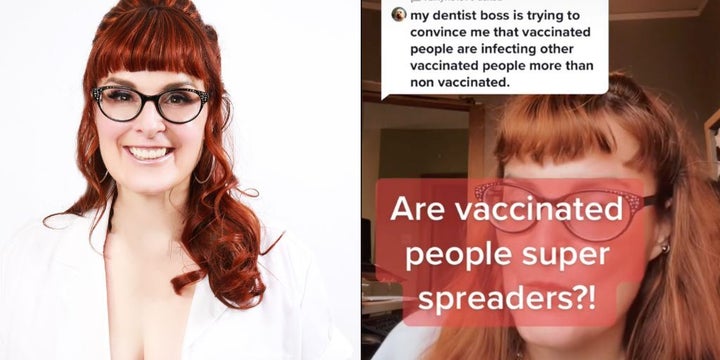
“While continuing to teach classes and conduct research for my day job, I started making evidence-based TikToks in the spring of 2020, and my entire life pretty much pivoted toward COVID-19 and being of service. I have built a community that trusts me and relies on me for evidence-based information, misinformation debunking and advice, and I take that responsibility seriously. It’s like having a very busy second job that I don’t get paid for.
At the beginning of the pandemic, I was on social media for the same reason everybody else was; I was bored during the shutdown and I needed some entertainment. Scrolling, I’d see posts of people’s kids, food and pets, but also a lot of COVID-19 misinformation. Motivated by a sense of duty as an epidemiologist and public health professor, I started to make my own social media content to debunk the nonsense and teach evidence-based information.
I get a lot of communications from people who are currently very scared of mitigations dropping: immunocompromised people, people who are older, people with elderly relatives, people with unvaccinated children and people with rare diseases with little research or information as to what COVID and long COVID would do to them.
Of course I would love to move on. I love going to concerts and traveling, and I dream of doing those things in the same carefree manner that I once did. But as a public health scientist, I feel I can’t really move on from COVID-19 with a community health mindset until the risks for all members of the community are no longer present.
“The idea that people who are at risk should just ‘stay home’ while others refuse to mitigate and allow COVID-19 to rip through communities is not acceptable.”
- Katrine Wallace, epidemiologist
I continue to wear a mask to protect vulnerable people in public, I do rapid antigen tests before I see my friends and family, and I avoid indoor large gatherings (because I do have regular contact with more vulnerable people).
The idea that people who are at risk should just ‘stay home’ while others refuse to mitigate and allow COVID-19 to rip through communities is not acceptable. Public health measures are meant to take care of all members of the community because we are all interconnected.
I will be more comfortable short term with the general situation when everyone is eligible to be vaccinated (kids under 5), and in the longer term, when we see endemic patterns of this virus (e.g. influenza has a very defined seasonal pattern — we know when to vaccinate for it, we know when to expect it).
Nothing like that exists yet for COVID-19. It is unpredictable for the most part, and we still see peaks in incidence based on new, more transmissible variants of the virus, instead of seasons or patterns of endemicity.”
The Immunocompromised
Meghan McCoy, a stay-at-home mom who is now unemployed due to COVID and ongoing health problems.
“I am immunocompromised. I have myalgic encephalomyelitis (ME, aka chronic fatigue syndrome), a post-viral illness I developed after mono.
Fall of 2021 is when my hope slowly crumbled. The delta variant was on the horizon. No vaccine yet for our kid. Our district would only offer in-person schooling. We felt as long as they were masked, we could risk it. But then I saw the gaping holes in our district’s plan: They could take off their masks indoors as long as they were three feet apart, and there were no added mitigations around higher-risk activities like lunch or singing.
I pushed the district to monitor ventilation and to add filtration like Corsi Rosenthal boxes, but they were unwilling to listen. They were more concerned with appeasing the anti-maskers than with protecting high-risk families in our community.
I quit my job; it wasn’t worth the risk, and we decided to homeschool our child. In November of 2021, they finally approved the vaccine for kids ages 5-11. We jumped at the chance and vaccinated our child right away. We planned to send them back to in-person school after winter break. It was more risk than we wanted to take, but at least our kid was vaccinated.
Then they decided to repeal masks altogether in our school district. They would return to ‘normal’ as if it was 2019. It was clear the district did not care about high-risk members of our community. I cringed every time a friend posted on Facebook about how much they ‘loved our school’s community.’ They had created a community of exclusion, and they couldn’t even see it.
“Sitting for two hours in an auditorium with 700 unmasked people to watch a student play seems like a stupid way to die. And that’s the question I have to ask myself every time: ‘Is this an event worth risking my permanent health or life over?’”
- Meghan McCoy, immunocompromised parent
In the spring of 2022, we found a private school. Their mitigation measures weren’t perfect, but it was better than what the public school could offer. In the rush to get back to normal, they have left us behind.
We go out less. There is no way I can ‘personal responsibility’ myself out of an event that seats 700, like a school play. We could’ve worn high-filtration masks ourselves, but I had no idea how many in the audience would wear masks, what the ventilation is like, or if they’ve added filtration units beyond the central HVAC. Sitting for two hours in an auditorium with 700 unmasked people to watch a student play seems like a stupid way to die. And that’s the question I have to ask myself every time: ‘Is this an event worth risking my permanent health or life over?’
As much as I might get frustrated, depressed or bitter about having to create this isolation island, I always remind myself that at least I had that privilege. We were able to make choices to protect ourselves that others couldn’t. There are high-risk individuals in our society who can’t isolate, and many died. Many more are still out there hoping their job won’t make them sicker or land them in the ICU.
We shouldn’t have to rely on hope. We should be able to rely on our community. I have to hope one day our community will wake up. I only hope it’s before we disable tens of millions with long COVID or create a new, more lethal variant. It doesn’t have to be this way. We have the tools to make our world safer and healthier, but we’re too lazy to use them.
As many have said, this pandemic is the worst group project ever.”

